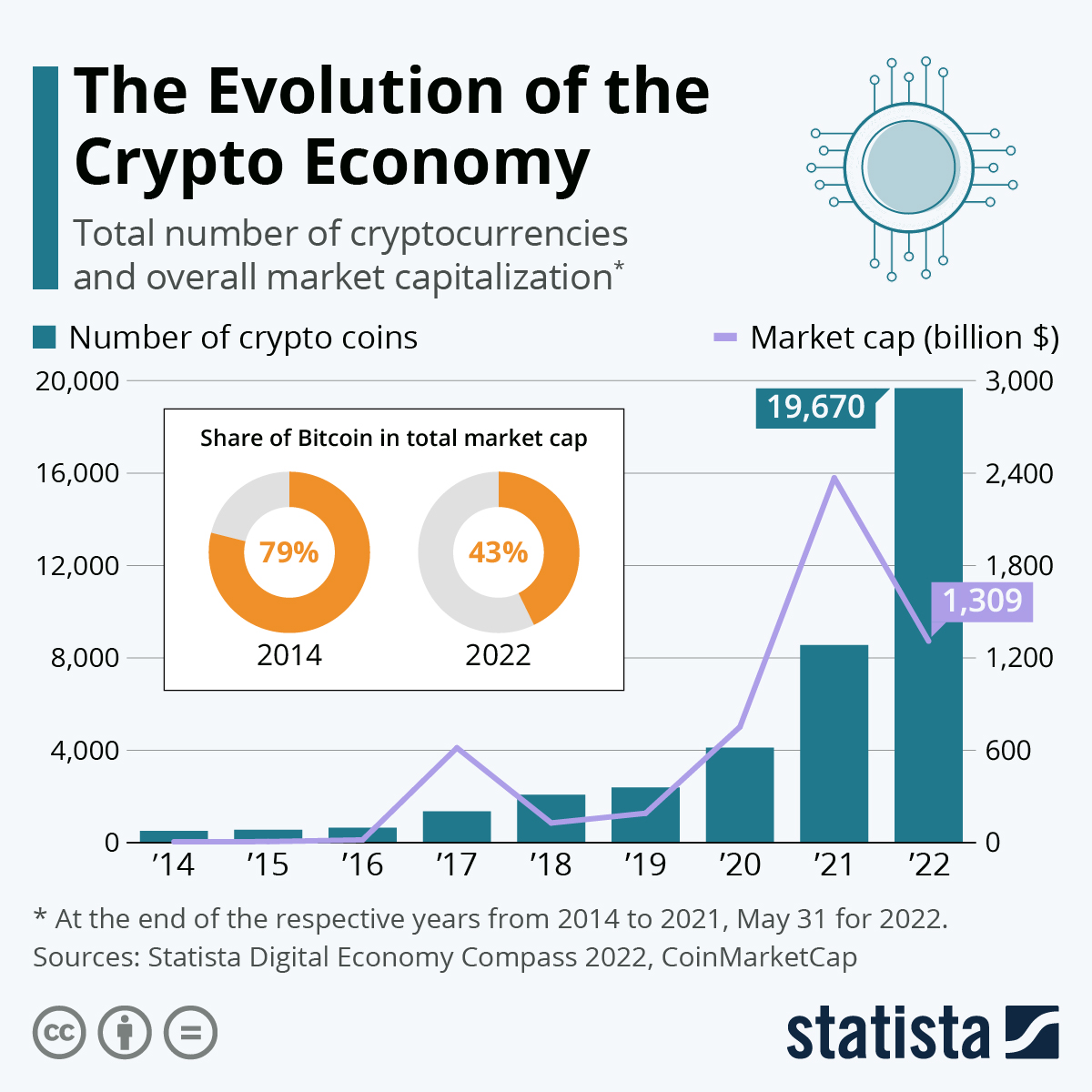Decentralized Currency vs. CBDCs: Which Will Win the Crypto Wars?


Cryptocurrencies have disrupted the traditional financial system and raised concerns for central banks around the world. This has sparked a battle between regulators and digital currencies, with governments exploring the possibility of launching their own digital currencies. In this article, we will explore the implications of this ongoing battle and the potential impact of government-backed digital currencies on the financial landscape.
The rise of cryptocurrencies
The rise of cryptocurrencies has been nothing short of meteoric, with Bitcoin leading the charge as the first truly decentralized digital currency. Initially dismissed as a fringe movement, cryptocurrencies have gained mainstream acceptance and investment, with thousands of different coins and tokens now available for trade. The appeal of cryptocurrencies lies in their decentralized nature, which removes the need for intermediaries like banks and financial institutions. Transactions can be conducted quickly, easily, and with minimal fees, making them an attractive alternative to traditional financial systems.
However, the rise of cryptocurrencies has also brought challenges for governments and regulators, who have struggled to keep up with the rapidly evolving landscape of digital finance. Cryptocurrencies have been associated with money laundering, tax evasion, and other illicit activities, leading to increased scrutiny and calls for tighter regulation. Despite these challenges, the popularity of cryptocurrencies shows no signs of slowing down, with more and more investors and businesses adopting them as a legitimate means of conducting transactions. The future of cryptocurrencies is still uncertain, but their impact on the financial world is undeniable.
Challenges faced by central banks
Central banks around the world are facing significant challenges in the ongoing battle against cryptocurrencies. One of the biggest hurdles is the decentralized nature of cryptocurrencies, which makes it difficult for central banks to regulate and monitor transactions. This lack of control over the financial system poses a risk to the stability of traditional financial institutions, as well as potentially creating opportunities for illegal activities such as money laundering and terrorism financing.
In addition to these challenges, central banks are also grappling with the rapid pace of technological change and the need to adapt to new and evolving payment systems. Digital currencies and blockchain technology have the potential to disrupt the traditional banking system, and central banks must find ways to incorporate these innovations into their operations while ensuring financial stability and security. The success of cryptocurrencies and the potential for government-backed digital currencies means that central banks must remain vigilant and agile in the face of new challenges in the ongoing crypto wars.
Government digital currency initiatives
Governments around the world are increasingly exploring the idea of launching their own digital currencies in response to the rise of decentralized cryptocurrencies. Known as central bank digital currencies (CBDCs), these initiatives aim to provide a government-backed alternative to cryptocurrencies, while also maintaining greater control over the financial system. CBDCs have the potential to offer greater efficiency, speed, and security in financial transactions, as well as reducing costs associated with traditional payment systems.
There are several examples of CBDCs that are currently being developed or have been launched by various countries around the world. Some examples include:
- The Digital Yuan: China has been one of the most active countries in the development of CBDCs, with its Digital Yuan already in circulation in some regions. The Digital Yuan is designed to operate alongside the country’s existing currency and provide greater control over its financial system.
- The Digital Euro: The European Central Bank has been exploring the possibility of a digital Euro, with a decision on its development expected in mid-2021. The Digital Euro would be designed to provide an alternative to cryptocurrencies while maintaining the stability of the Eurozone’s financial system.
- The Digital Dollar: The United States is also considering the development of a digital dollar, with the Federal Reserve exploring the potential benefits and risks of a CBDC. The Digital Dollar would provide greater financial inclusion and efficiency in transactions, while also enhancing the security and stability of the US financial system.
- The Digital Lira: Turkey has also announced plans to develop a digital currency, known as the Digital Lira, which is expected to be launched in 2021. The Digital Lira aims to provide greater financial inclusion and efficiency in transactions, while also reducing the country’s dependence on foreign currencies.
The future of money
The rise of decentralized cryptocurrencies and the development of government-backed digital currencies is reshaping the future of money. With new technologies and innovations emerging at an unprecedented pace, the financial landscape is rapidly evolving. The future of money is likely to be characterized by greater digitalization, increased speed and efficiency in transactions, and a more decentralized and secure financial system.
One potential scenario for the future of money is the widespread adoption of cryptocurrencies, with digital currencies such as Bitcoin and Ethereum becoming mainstream payment options. This would require a shift in the way people view and use money, with cryptocurrencies potentially replacing traditional currencies in some cases. Another scenario is the dominance of CBDCs, with government-backed digital currencies becoming the primary form of payment and transaction. In this scenario, governments would maintain greater control over the financial system, while also providing greater security and efficiency in transactions.
Ultimately, the future of money is likely to be shaped by a combination of these scenarios, with cryptocurrencies and CBDCs coexisting alongside traditional currencies. The ongoing crypto wars and the development of new technologies will continue to shape the financial landscape in the coming years, making it an exciting and dynamic time for the future of money.
Conclusions
The battle between decentralized currency and CBDCs is heating up, with both sides vying for dominance in the crypto space. While CBDCs may offer governments greater control over the financial system, decentralized currency represents a true disruption to the status quo. Only time will tell which side will emerge victorious in the crypto wars, but one thing is certain: the future of money will be shaped by the outcome of this ongoing battle. As the race to the top continues, it will be fascinating to watch how both sides evolve and adapt to the changing landscape of finance.





